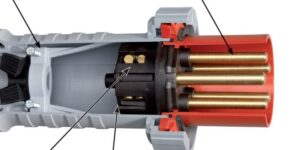A Primer on Industrial Temperature Control

Temperature measuring and control is becoming one of the most critical aspects of manufacturing.
Whether in food processing, beverage production, pharmaceuticals, or even in the motor vehicle assembly plant, temperature control, and monitoring is an important process.
Sometimes you can find yourself acting against the law by failing to install temperature control and monitoring tools.
A significant number of individuals ignore the temperatures of the whole production plant only to find themselves in serious dangers.
Here are some of the reasons as to why you need to control and monitor temperatures of the plant.
Safety Purposes in Food Industry
PowerBlanket records that custom solutions are the best for any company that wants to control and monitor temperatures in the organization if at all it wants to achieve safety. In the food and beverage industry, it has been recorded that very high temperatures are not safe for food preservation as they could encourage the growth of bacteria.
This means that any person who consumes this type of food will be rendered sick either due to high temperatures or due to the growth of bacteria.
On the other hand, processing and storing food products at very low temperatures is also not conducive as it could lead to severe diseases.
Protecting Pharmaceutical and Laboratories
Another important reason as to why your manufacturing plant should control temperatures is because some products only require a set temperature so that they can become safe for human consumption. Most of the pharmaceutical products are very delicate such that subjecting them to very high or very low temperatures leads to unwanted results.
Laboratories harbor the same problem. Sometimes they would require heating tools while at other periods they are only interested in cooling tools. Therefore, if your manufacturing plant operates as a pharmaceutical or a laboratory having process temperature control tools is something that you cannot underestimate.
Saving on Energy Cost
We understand that the cost of energy has been skyrocketing overtime, something that you as the plant manager want to control. Therefore, being energy efficient is one of the critical points that you would like to address so that you can minimize your energy usage. Some simple faults such as a failed thermostat could mean excessive heating of the whole system.
If the entire plant ventilation is not cooling the system, you will be required to use your cooler to cool the system. You might end up running your cooling system the whole day, hence increasing your monthly electricity bills. Monitoring temperatures will make sure that you detect some simple faults and develop the necessary remedy.
Alternatively, using chillers to cool machinery can assist with managing temperature and energy cost.
Increasing Machinery Lifespan
It is common knowledge that overheating your manufacturing system could be one of the leading causes of continued wear and tear. Increase temperatures in your systems mean a significant number of the mechanical parts are replaced prematurely. You will also be required to pay for repair and maintenance costs continually.
It’s not only the hotter temperatures are dangerous for your system, but even the freezing temperatures will also not be perfect for your system. You should make an effort of monitoring and controlling temperatures in the whole manufacturing plant so that you can minimize the costs of repair and maintenance.
You will also be able to expand on the life of your machinery hence saving the company a significant amount of money.
The accuracy of the Products Manufactured
Another important factor to put into considerations is that temperatures also play a significant role in determining the efficiency of the products being manufactured. Very high temperatures will expand the size of the product being manufactured while very low temperatures will minimize the size of the product being produced.
For example, if a product uses metal for its raw materials, the temperature will play a significant role in determining its size. Metal will move proportionately with the temperature changes such that a change in temperature by one Fahrenheit either increases or reduces the size of the metal or steel by a similar margin.
Form the points highlighted above; it is essential to monitor and control temperatures in the manufacturing process to prevent various incidences while at the same time ensuring that the plant is operating optimally. The monitored and controlled temperature will also give employees a conducive environment to work in the production lines.






